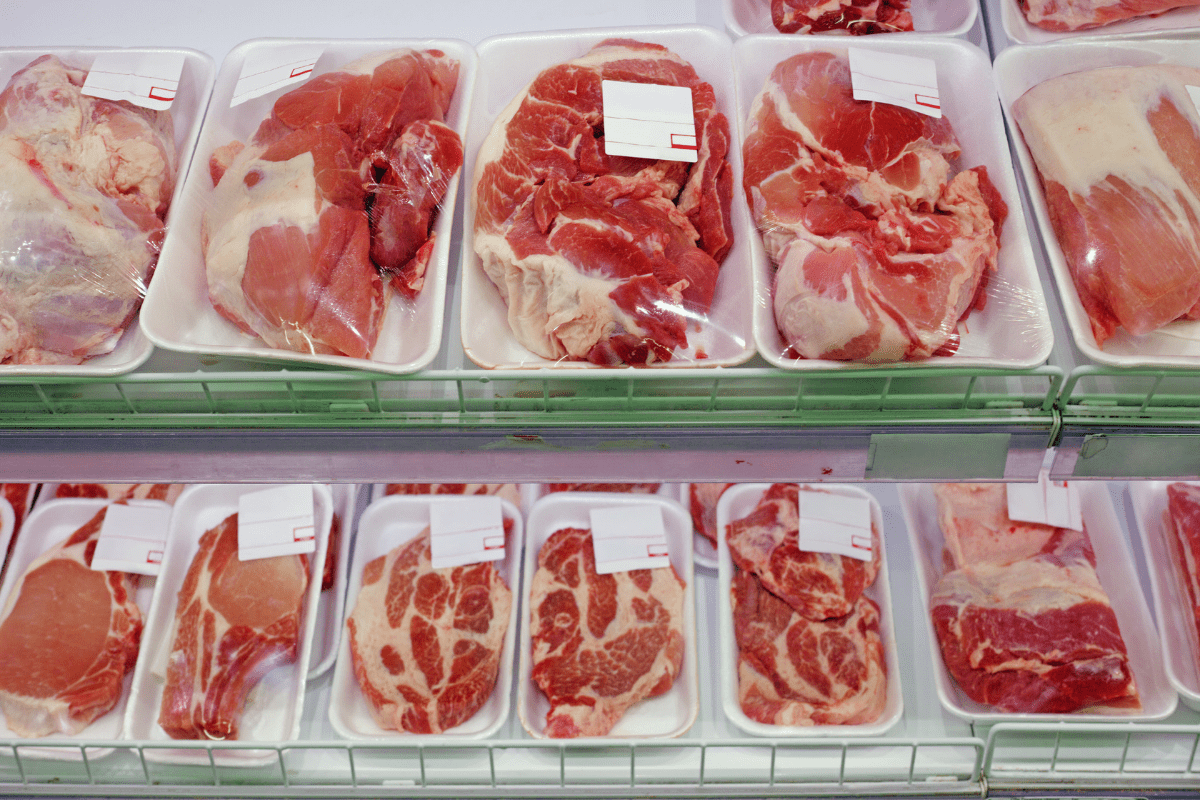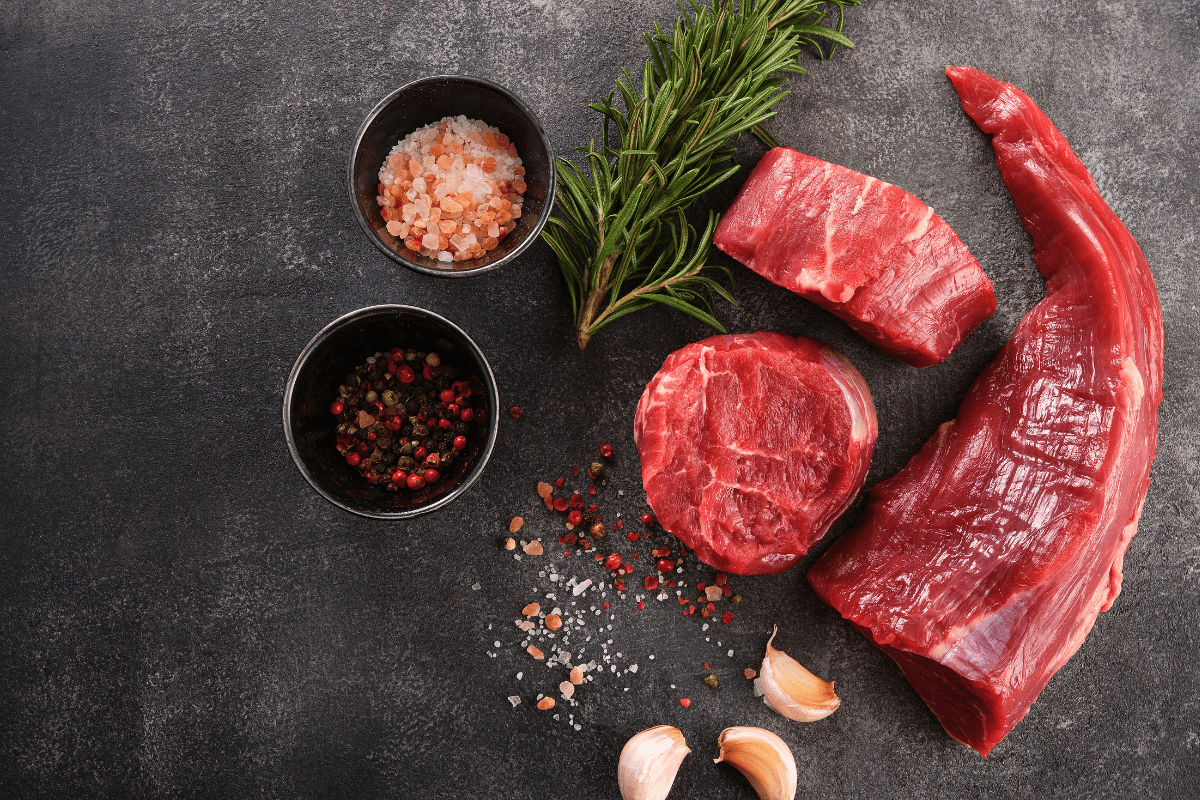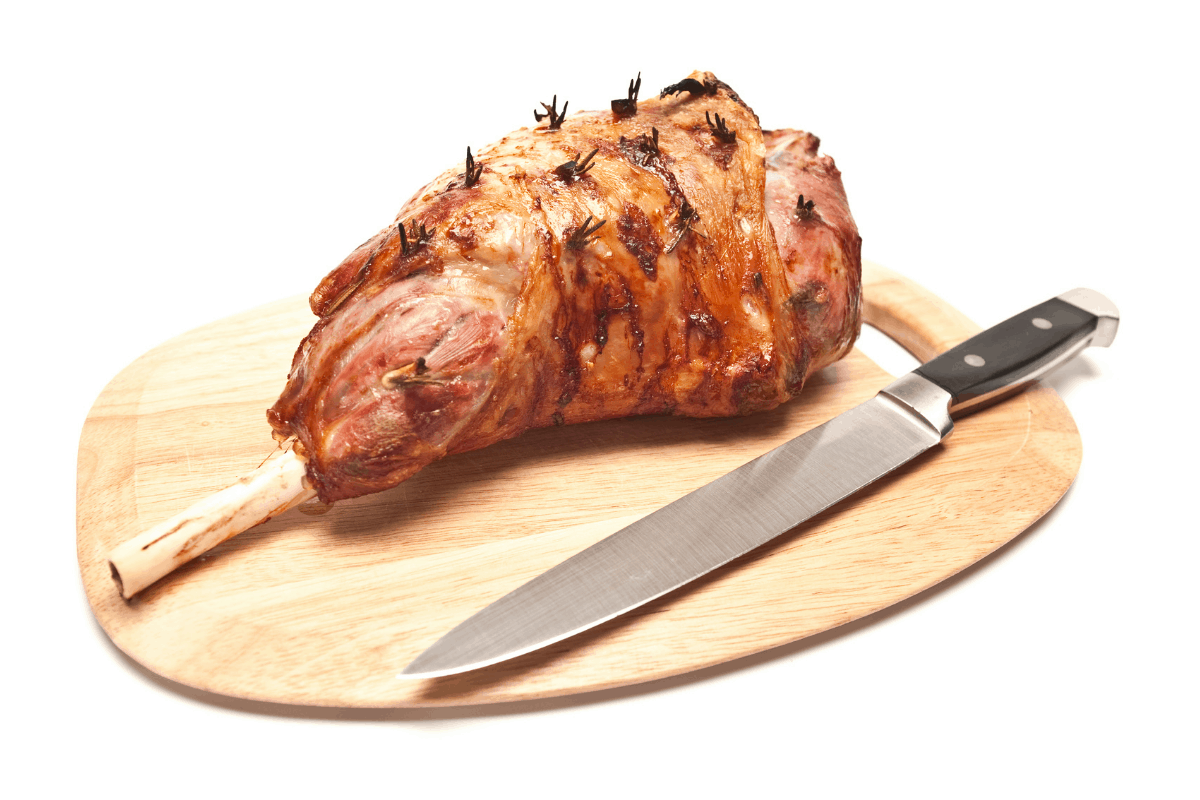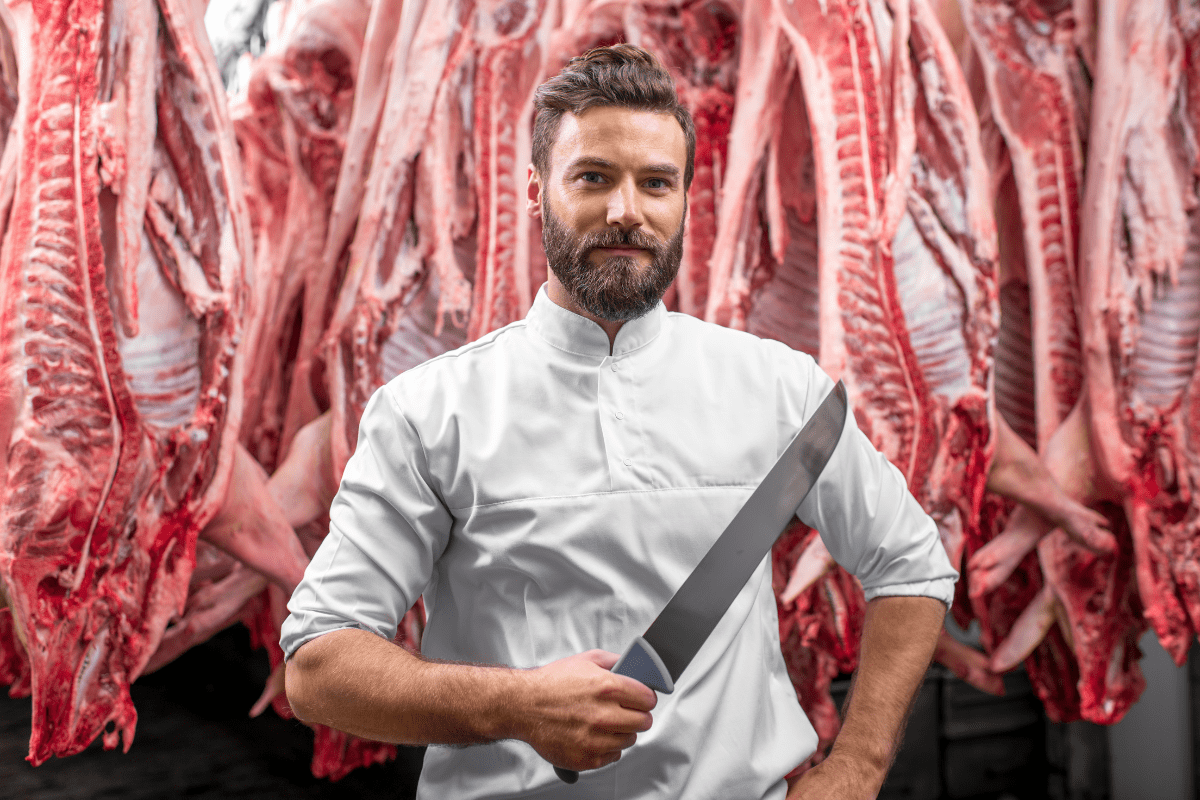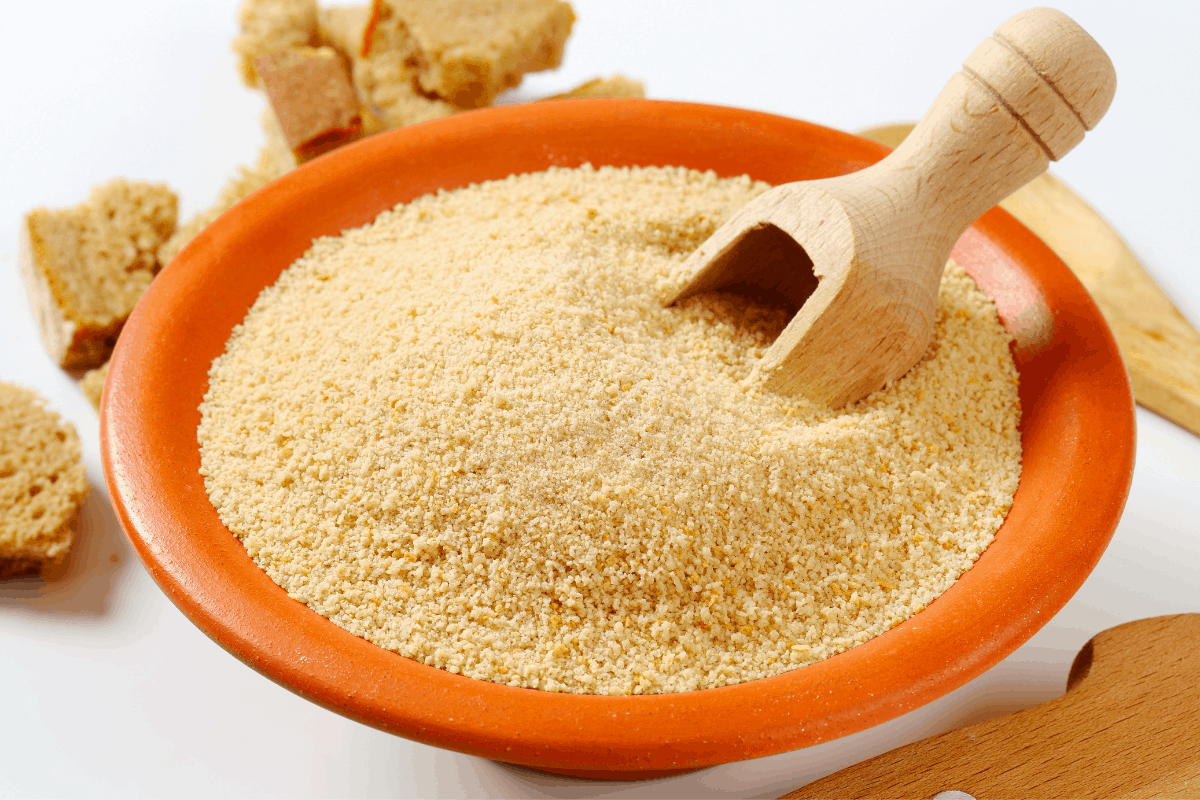Meat is the highest part of the food budget in most households, and so money saving tips on buying meat cheaper are always welcome.
Well, we have 21 tips that will help you do just that!
21 Thrifty Meat Buying Tips to Save You Money
- Buy cheaper cuts
- Buy bigger cuts and trim yourself
- Buy a whole animal
- Do the cutting yourself
- Buy in bulk with Family or Friends
- Ask for bones – butchers pay to have these taken away
- Learn what is trim and what is waste
- Look at $/kg
- Learn different cut names
- Add fillers like lentils/beans/oats/veggies
- Cut down meat portion size – 6oz steak instead of 8oz
- Cut down serving size – leave some in pan for another dish
- Have more Ground Meat meals
- Use a mix of different meats
- Get creative with leftovers
- Enlarge the side dishes
- Buy after the holidays and stock up
- Buy reduced price items
- Use common sense with expired meat
- Eat at least 1 meatless dinner per week and increase over time
- Buy from Gamekeeper or Hunters
We will now look in more detail at each of these simple money saving meat buying tips. to show you just how easily they can be included into your shopping habits and save you a lot of money on your grocery bill
1. Buy Cheaper Meat Cuts
The type of meat cuts, as well as the animal those cuts are taken from, can have a big impact on your meat bill. For instance, Beef and Lamb are typically more expensive to buy than Pork or Chicken.
Likewise, the tougher cuts taken from the shoulder such as stewing meat and pot roasts, are cheaper to buy than the prime steaks and roasting cuts.
You should not shy away from buying the cheaper cuts, as often these meats have much more flavor than the more expensive cuts, they just need a little longer cooking.
2. Buy Bigger Cuts of Meat
The more the butcher has to cut and trim the meat, the more expensive it is to buy. Somebody has to pay for all the extra labour.
Therefore, the bigger the cut of meat that you buy, such as a whole pork leg or shoulder, the less you will pay.
Buying a whole primal cut could save you over 30% of the cost of buying the same amount of meat that has been fully portioned by the butcher.
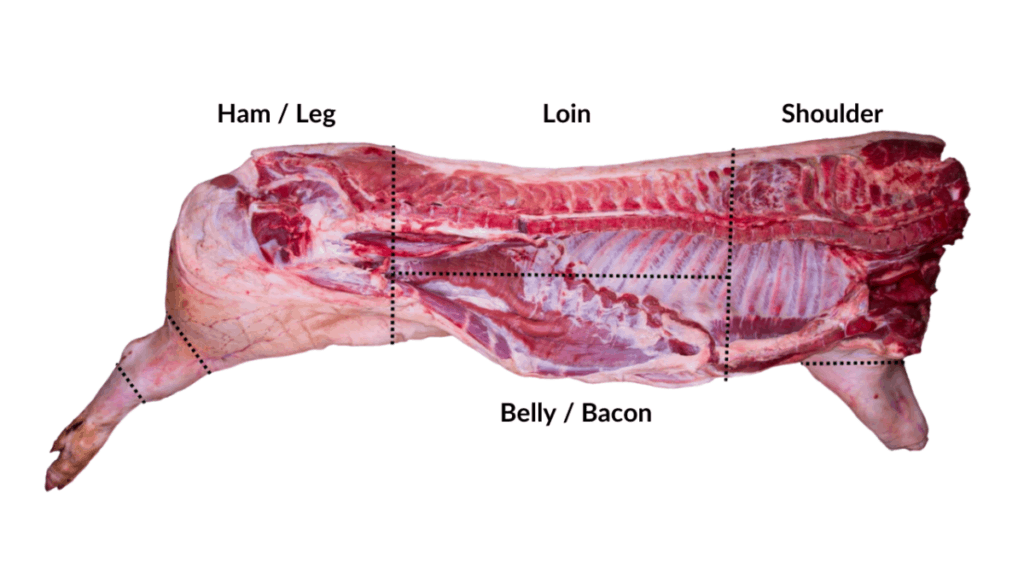
3. Buy A Whole Animal
If you really want to save some money, then buying a whole animal from the butcher can save you a lot of money.
If you have the butcher cut and pack the animal for you, you can easily save 25% or more on the cost of buying each cut individually.
4. Do The Cutting Yourself
As mentioned in the previous tips, the more the butcher has to do, the more expensive the meat.
If you are willing to learn a few simple butchery techniques, then you can purchase the whole animal to cut up yourself at home. Don’t worry, the butcher will cut the animal into 4 or 5 primals so you can get the meat home in your car!
Youtube has a lot of basic butchery tutorials that will show you every step of the way to cut up an animal into the cuts you recognise.
Doing this could easily save you 50% of the cost to buy the same amount of meat already prepared.
The advantages of butchering the meat yourself also allows you to cut and pack the meat to the sizes that suit your family. Sometimes buying pre-cut meat leaves you needing to buy bigger than you need, meaning you spend more and possibly waste more.
Here is a video on how to cut your own meat to save money
5. Buy In Bulk With Family or Friends
If you do not have the funds or space to purchase a whole butchered animal by yourself, then split the cost with your meat eating family or friends.
As mentioned earlier, you can save up to 30% by buying the whole animal, and any good butcher will be happy to cut and pack to your requirements.
The butcher will divide the meat equally between the buyers to ensure everyone gets some of the prime and cheaper cuts.
6. Ask Your Butcher for Bones
If you use a butcher or meat market on a regular basis, why not ask them if they have any bones that you can have.
Butchers usually have to pay to have the bones and meat waste taken away, and this is done by weight. Therefor you are essentially saving the butcher money by taking the bones from them.
Picking up some pork, chicken or beef bones can be a good way to make stock or soup.
7. Learn What is Trim and What is Waste
If you purchase bulk packs of meat from places like Costco, then you may have to do a bit of trimming to the meat at home.
The word ‘unpeeled’ on a meat package means untrimmed.
When trimming the meat, some of that trim will be no use for anything, such as silver skin, but other parts can be used to make another meal. For instance the ‘chain’ removed from a beef tenderloin can be made into ground beef.
Make sure if you buy meat to trim at home, that you are not throwing away perfectly edible meat.
8. Check the Price Per LB or KG
When buying pre packaged meat from the grocery store, be sure to check the price per lb/kg.
Quite often meat can seem like a good buy, but when you compare if with a similar cut, it can vary by as much as 15 – 20% in price.
For instance. A centre cut pork loin roast may be 20% cheaper than the pack of centre cut pork loin steaks. This is exactly the same cut of meat apart from one has been left in the piece, and one cut into steaks.
Would you be willing to use a knife to cut that roast into steaks at home. If so, you could save yourself 20% off the price.
9. Learn The Different Cuts of Meat
If you are willing to educate yourself a little on the different cuts of meat, and how to cook them, then you will be able to make some big savings on your meat budget.
Understanding the different names, how best to cook them and what the meat cuts can be used for, will allow you to take advantage of the different price promotions when they are on offer.
Many times people will only purchase the popular cuts for fear of not knowing how to prepare the cheaper cuts. Grocery stores understand this and so mark up the price of the popular cuts accordingly.
You don’t have to become a mastermind in animal anatomy, however learning a little about the different meat cuts will not only save you money, it will open your world to a whole new meat eating experience.
10. Add Oats, Lentils, Beans & Veggies
When cooking dishes that ask for ground meats, consider using ‘fillers / Stretchers‘ to allow you to use less meat.
Examples of Meat Stretchers:
- Eggs
- Rice
- Grains
- Beans
- Veggies
- breadcrumbs
By adding things such as oats, lentils, beans or grated vegetables, you can cut the amount of meat you use up to 50% without really noticing it.
This is also a great way to get the family to eat more vegetables.
The next time you are making spaghetti for the family, only use half the ground beef and replace the other half with grated carrot and a few chopped peppers. I’m pretty sure that the family won’t notice the lesser meat content and will enjoy the different twist you have made to a family favorite dish.
11. Cut Down The Meat Portion Size
You can make significant savings to your meat bill just by cutting down the amount of meat you normally buy.
If you regularly eat steak and buy a 10oz cut, then maybe go down to an 9oz portion. If you are buying 4 steaks for a family meal and you cut each steak down by 1oz, then you have saved a quarter pound in weight. At $20 per kg for prime steak, that is a $5 saving with one simple tip.
Again, if you usually buy a 3lb Roast, then just get a slightly smaller cut, or buy a cheaper cut at the same weight, and watch the savings roll in.
12. Cut Down The Serving Size
Not only can you save money by buying smaller cuts of meat, but you can also save money by giving smaller plate portions.
If you usually give 4-5 slices of meat for a roast dinner serving, just leave one slice off. Again, a slice from each plate could be enough for another meal, or perhaps sandwiches the following day.
If you usually put 3 slices of bacon or sausages on a cooked breakfast, cut down and add an extra egg or hash brown to make the plate look full.
Little cuts to portion sizes not only help with health, but save you money over the course of the month.
TIP: Serving your meals on a smaller plate can give the impression of a large meal with less food. Empty space on a plate gives the impression of scarcity!
13. Eat More Ground Meat Meals
Ground meat is a meat budget favorite.
Not only is the meat versatile enough to make hundreds of meal options, as mentioned earlier, you can use less of the meat when combined with other ingredients that stretch out the meat.
Another benefit is that almost any ground meat can be substituted with each other. For instance, a Chilli made with ground beef could just as easily use ground pork or chicken. Taco’s could be made with ground turkey….. you get the idea.
Always take the time to see if any ground meat is on offer in the grocery store, and stock up when it is. Then get creative and just use whatever ground meat you have on hand, to use in whatever ground meat recipe you are making.
14. Use a Mix of Meats
Just like with the ground meats, there is no reason why you cannot combine different cuts of meat within a recipe.
Making meatloaf or meatballs with a 50/50 mix of combined ground beef and pork is delicious.
Adding 20% chopped bacon or ham to a beef stew gives added flavor and let’s you use less of the expensive meat.
Thinks of ways to add cheaper cuts of meat to your meals, but look at it as adding a new dimension to the meal rather than penny pinching.
15. Get Creative With Leftovers
Just as with using different meats to make the meal, do the same with leftovers.
If you don’t have enough leftovers to make a full meal, then add what you have into what you are going to make.
Got some leftover turkey, then add it to the chicken pasta that you are making. Got some leftover pork chops, take the meat and add it to the beef stew you are putting together.
If you find you just had odds and ends of meat leftovers, have a freezer bag or tub to add to and when there is enough, create a dish such as stir fry with all the different meats combined. It will make an interesting meal and save you money.
Meat is too expensive to let any of it end up going to waste, so get creative with your meal planning to ensure everything is used.
16. Enlarge Your Side Dishes
Try not to make meat the primary focus of a meal. Over time, get your family used to smaller meat portions.
If you are worried that cutting down on the meat will not go unnoticed, then increase the side dish portions.
Maybe cook an extra vegetable side dish to add to the meal, or increase the amount of what you have already cooked.
Maybe consider having a healthy dessert after the meal just to make sure everyone is satisfied. Fruit salad or homemade ice-cream.
Making meat a smaller part of the dinner doesn’t mean that your family have to go hungry, just fill them up on the less expensive meal ingredients.
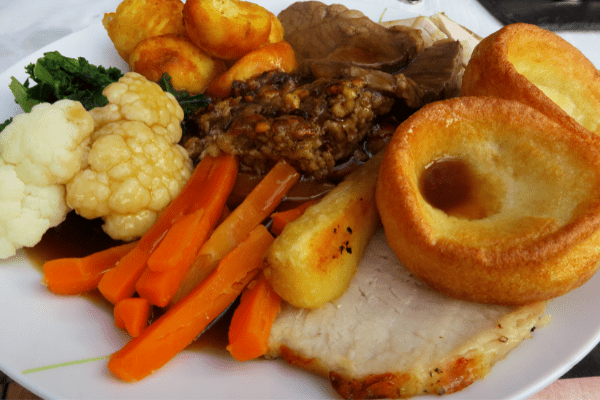
17. Buy After The Holidays
Grocery stores buy large quantities of meat in the lead up to popular holiday events such as Easter, Christmas and Thanksgiving. They want to make sure that they have enough for every customer.
Consequently, they usually have a lot of stock left over after the event.
This overstock is now taking up prime retail selling space, and so the grocery stores need to shift it as fast as possible. There are BARGAINS to be had!!
If you are not fussy about the type of meat you buy, or the size if you are willing to cut it up yourself, then you can sometimes pick up after event turkeys for as much as 90% OFF!
This would be the ideal time to stock up and put those newly acquired meat cutting skills into practice,
Picking up a 25lb Turkey for pennies on the dollar could make a lot of meals if cut up and portioned correctly.
Even if the meat is frozen, provided it is handled correctly, there is no issue with thawing it out, cutting it up and then re-freezing it.
We have an article about refreezing meat here!
18. Buy Reduced Price Items
You don’t have to wait until after the holidays to pick up some meat bargains.
You will usually find that most days there will be some meat reduced in price due to coming up to its use by date.
If you are going to cook the meat in the next day or so, or have room to freeze it, then you should find out what times your local grocery store reduces their meat items and make a point of getting there to pick up those reduced items.
Depending on how much stock they are looking to clear, the reductions can range from 10% to 75% off every day.
Loss Leaders are another great way to pick up low cost meat. Sometimes stores will offer sales on meat that are below the price that the store has paid for the item. These are known as loss leaders, and are designed to tempt you into the store in a hope you will buy more profitable items at the same time.
Be sure to sign up to your local grocery store mailing lists or scan the local newspapers to see what offers the stores have going on.
19. Use Common Sense With Expired Meat
A HUUUUUUUUGE amount of meat is thrown away every day due to being past its ‘expiry’ date.
Meat manufacturers have to provide a date on their packaged meat that tells you when they consider it no longer safe to be consumed.
To be sure that they will not face any legal consequences from selling ‘rotten’ meat, these companies will put a date on the meat that is well within the timeframe that they feel the meat will ‘really’ be likely to go bad.
Please do not throw meat away just because the package says it is now not safe to eat.
When deciding whether meat is safe to eat, use your senses to guide you. If the meat looks fine, smells fine and feels fine…… then guess what…..it’s fine!
Meat that is going bad will look discolored, have a bad smell and will feel slimy or sticky. This is the time you should start to worry about whether to use it or not. If it’s not showing these signs, then you are ok to go ahead and cook the meat, regardless of what the packaging states.
Here is an article that expains in more detail how to tell if expired meat is safe to eat.
20. Eat More Meatless Dinners
A big way to save money on your meat budget is to have at least one meat free meal per week.
There are so many delicious meat free meal recipes on the internet now, that going without meat once a week shouldn’t feel like a sacrifice.
In fact, there are many meatless meals now that taste like they have meat in them and if you didn’t tell your family, they would never know they weren’t eating meat.
24 Meatless Recipes That Your Carnivore Will Love – cookieandkate.com
Ideally, you want to get to a point where the family are happy to eat meat free at least twice a week, and more often if you can get away with it.
This will really have a big impact on your grocery bill savings.
21. Approach Gamekeepers or Hunters
You may live in an area where hunting is popular, or there are country estates with gamekeepers. Perhaps you have friends who like to go hunting.
Often times, these hunters will have more meat than they can personally use, and will offer it for sale to the public for discount prices.
You will find that the meat on offer is not the usual animals you will see in your grocery stores, and may include, venison, rabbit, pheasant, elk etc
If you fancy trying some slightly more exotic meat, check your local area and see if there are options for you to buy meat this way, and make some big savings. whist expanding your culinary tastes at the same time.

So there you have 21 ways to save money on your meat bill.
Hopefully you will be able to incorporate a few different tips into your current buying and cooking regime to enable you to make some significant savings on your meat buying costs.
